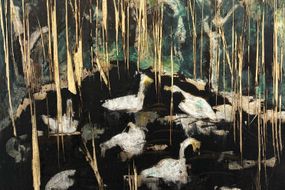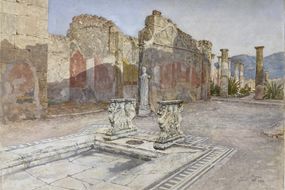From 7 December to 18 December 2021
What do the numbers tell us? Are the rational approach and mathematical systems the only possible ways to describe the world? These are just some of the questions that Sol Salutis wants to unleash: the language of numbers, the new installation by the Polish artist Jakub Woynarowski that will open on Monday 6 December in the suggestive Spazio Molini, obtained from the recovery of the ancient mill of Pastificio Cerere.
The exhibition, organized by the Adam Mickiewicz Institute in collaboration with the Polish Institute of Rome, in partnership with the Pastificio Cerere Foundation and co-financed with funds from the Ministry of Culture and National Heritage of the Republic of Poland, will remain open to the public. until Saturday 18 December 2021.
The Pythagorean search for a balance between the practical and symbolic meanings of mathematics seems to take shape in the technological society. For example, in the structure of global financial markets the non-rational element appears to be fundamental; blind faith in the anticipation power of algorithms or a "crisis of faith" in investments resulting in a stock market crash can be decisive for the functionality of a system.
Almost two centuries ago, the Polish Romantic poet Adam Mickiewicz (1798-1855) described the intertwining of mathematics and metaphysics in his work History of the Future. Manuscripts of later versions have been lost or destroyed, but various information emerges from the poet's surviving correspondence and notes. We know that this romantic utopian vision contained surprisingly accurate futurological reflections on the development of human civilization, anticipating the works of Julius Verne and Herbert George Wells by decades. The writer's vision includes, among other things, near-realistic descriptions of unrealized technical inventions, such as airplanes, spacecraft or apparatus for recording and transmitting sound and images. The devices designed also include optical fibers, which inspired Jakub Woynarowski's multimedia installation "Sol Salutis" (lat .: the sun of salvation), referring to the Archimedean mirror system which was attributed the power to reflect the " fire signs "of solar writing.

Via degli Ausoni, 7, Rome, Italy
Opening hours
| opens - closes | last entry | |
| monday | Closed now | |
| tuesday | 15:00 - 19:00 | |
| wednesday | 15:00 - 19:00 | |
| thursday | 15:00 - 19:00 | |
| friday | 15:00 - 19:00 | |
| saturday | 15:00 - 19:00 | |
| sunday | Closed now |
On Mondays the foundation is open by appointment only

From 26 September to 20 December 2025
I know the signs of the ancient flame

MacS - Museum of Contemporary Art Sicily, Catania

From 17 September to 28 February 2026
Luigi Bazzani and the Pompeian house

MANN - National Archaeological Museum of Naples, Naples